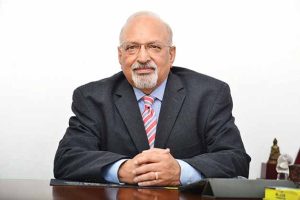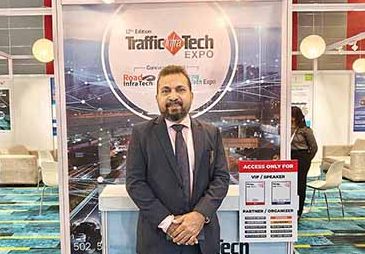In an upfront conversation, V.K. Misra, Technical Director, JK Tyre & Industries Ltd. spoke to Sumesh Soman on the tyre technology to watch out for.
Q. How different are car radial sensors from truck and bus radials?
A. Only the sensor size is smaller in the former. For trucks and cars, where the sensor size is similar, the mounting arrangements are different. Elements are different too, for example, how the sensor is fitted on the tyre is different while the technology in principle remains the same.
Q. What is Fuel Saver technology?
A. We came up with the concept of ‘Fuel Saver’ owing to the pressure on rolling resistance. Primarily, we came up with the fuel saver technology for a commercial vehicle. The biggest cost for any commercial operator is fuel. So, if you can give somebody the benefit of fuel-saving, and if you can demonstrate and prove it, then people are willing to adopt and buy the product. Since we’ve come up with this product we reduced the Runflat System Component (RSC) to an extent along with some other changes in the product. Changes in the design, the construction, the material, and the compounds brought down the fuel consumption to about eight per cent. And, and it was humongous, we are still doing some more work on bringing this technology. So far, we’ve brought this technology into two TBR categories of products, particularly in 20-inch size tyres. We’ve also introduced this into tubeless TBS.
The idea behind this is primarily giving the customer a product, which can bring their cost of operations down. Of course, the only thing that one has to ensure is not to compromise on any other performance parameter. For instance, the mileage might vary by five per cent or so, but that’s nothing compared to the eight per cent saving during the life of a tyre that runs an estimated 80,000-100,000 kms. You can imagine the kind of savings; your tyre cost is recovered. In fact, we have calculated, the whole set of tyres are paid for if you apply this tech to your vehicle.
Q. How soon can the fuel saver technology be made available on tubeless tyres?
A. We have initially launched it in the tube-type tyres, and we are ready with the tubeless tyres as well. It’s only a matter of time before we launch it in the tubeless range as well. So, the mileage must be either the same or a little better. That is our target and the product is under evaluation. Fuel-saving is confirmed and you know, in between there was the pandemic and the vehicles were not running. We have to run up to 50,000 or 50,000 plus km to establish the mileage.
Q. Could you explain the steering robot technology?
A. There is a variation from driver-to-driver when you’re doing an instrumented test. So, to eliminate this the steering robot came into existence. We were the first company to buy this. It basically eliminates the impact of a driver, so the steering robot actually takes over and you can almost consider that the car turns autonomous. So, the driver doesn’t have control, it’s the steering robot that has control and provides input. So, the input is perfectly accurate sans the human intervention. You will give that important input and the robot will control the steering, that’s why it is called the steering robot.
Q. How much of a help is the steering robot when it comes to testing tyres?
A. From an objective data point of view, it’s apt for repetitive tasks and very consistent. This makes it suited for the task. We have found that the results we are able to give are very consistent in terms of output.
Q. Could you explain the workings of the puncture-proof tyre?
A. It was my pet project. We’ve been working on it for about two years and now we are almost ready for the launch of the product. The target was to come up with a technology that enhances the performance of the product while making it puncture less. Now, whatever that is put into the tyre, it adds to the weight. And we were looking for a few things, firstly, we were looking at uniformity in rolling behaviour. Secondly, the material behaviour should not be subject to temperature change and the third was noise reduction. We have achieved that and it took us some time. We’ve tested the material by puncturing it at 12 different locations and running it for 10,000 kms without a pressure drop. And then we took the same tyre and punctured it 250 times and ran that for another 20,000 kms to establish no air leaks. We are ready with the product. Now we just have to wait to be ready to cater to the demand and surplus production to be up and running before the launch.
Q. Will it be applicable on just passenger vehicles?
A. For the time being it is for passenger cars but we are going to be doing it for bikes very soon. Because technology will be the same. Only the spring techniques, the machines, the sizes of the rims are different. The type of spray system will be slightly different too but the principle will remain the same. Primarily for tubeless tyres because the principle doesn’t apply to tube tyres.
Q. What does the transition from ICE to EV mean for the company?
A. We are very well working in parallel to align with the EV technology. There are a few important aspects though that we must consider. It should have a resistance to high torque, actually instant torque. It should have low rolling resistance and lastly, it should have low noise because apart from the tyres and steering there isn’t anything that moves in an EV. ACI
“ The biggest cost for any commercial operator is fuel. So, if you can give somebody the benefit of fuel-saving, and if you can demonstrate and prove it, then people are willing to adopt and buy the product.”
“ There is a variation from driver-to-driver when you’re doing an instrumented test. So, to eliminate this the steering robot came into existence.”
“We were looking at uniformity in rolling behaviour. Secondly, the material behaviour should not be subject to temperature change and the third was noise reduction.”










Leave a Reply